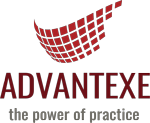Most global businesses have developed and execute fluid organizational structures that are dependent upon a matrixed organization where departments, roles, and individuals have responsibility and / or accountability to more than one other business, function, or department at the same time. Just that run-on sentence alone is enough to throw most people into a panic state of leadership!
While keeping track of the complexities and responsibilities in a matrixed organization is very challenging for most leaders, functioning successfully when there are conflicting directives makes the situation exponentially more difficult to function in. I was recently leading a Fundamentals of Business Leadership Simulation Workshop for a group of Technical Engineer Leaders who have multiple dotted-line responsibilities to New Product Development (part of R&D), Marketing, (Product/Platform Management), and Sales (in a support role). At the beginning of the session I asked what their most challenging frustration was and they almost unanimously agreed that leading through conflicting directives is the top one:
- New Product Development is evaluated, compensated, and judged on their ability to bring new and innovative products to market and they want the Technical Engineers to support the innovation focus.
- Marketing and Product Management are responsible for expanding new products to new applications and markets and want the Technical Engineers to support them by expanding applications.
- Sales is responsible for generating as much revenue as possible and they want the Technical Engineers to support them close new business.
Each of the functions the Technical Engineers – and their teams which could include 10 to 50 people – have significantly different directives which forces the Technical Engineers to have different priorities.
In my work as a lead consultant developing leadership skills, this seems to be a more and more of a common challenge for many mid-level leaders.
So, what’s a leader to do when faced with a situation like this? Here are a few practical ideas based on my observations and dialogues with leaders who have found a way to make it work:
Link your priorities to overall strategy and objectives & key results (OKRs)
The first suggestion is to step back from everything and embrace the overall strategy and OKRs (Objectives and Key Results) of the business as a source of helping you to prioritize. For example, if your strategy and value proposition to your customers is Product Leadership, then you need to do everything possible to support the development of new, innovative products to your customers first and the others second and third. If your value proposition if Customer Intimacy, then your priorities should focus on deeply understanding the needs of your customers so that you can offer them solutions to their challenges. If your strategy is Operational Excellence and you are trying to drive costs out of your system, then you need to prioritize toward saving money and creating volume.
Try to get all stakeholders together to create alignment
While this may very hard to accomplish for many reasons, that doesn’t mean you stop trying. Instead of wasting time being frustrated, take that energy and try to collaborate with all of the stakeholders and proactively push toward alignment. A meeting or workshop with all the functions giving you conflicting priorities could help to create some alignment or clarity that you can leverage in your work.
Clarify whenever possible
Don’t just assume things are terribly out of alignment and in conflict. In actuality, they may be different than your perception. Take a few moments to ask questions and clarify your perceptions of the conflicting directives with the key stakeholders and you may be surprised to find out that there is more alignment than you think. For example, when one of the conflicting directives is slightly ambiguous, ask the stakeholder and see if you can persuade the conversation to more clarity and alignment.
When all else fails, just choose the one you think is most important
Sometimes there is no magic answer. If your situation is extremely difficult and you aren’t able to find clarity and can’t create alignment, then the best practice I discovered is to choose the directive that you think is best and most important and run with it. I believe doing one of them well – rather than several of them half way – will be more productive for your company and will definitely be more emotionally productive for you and your team.










